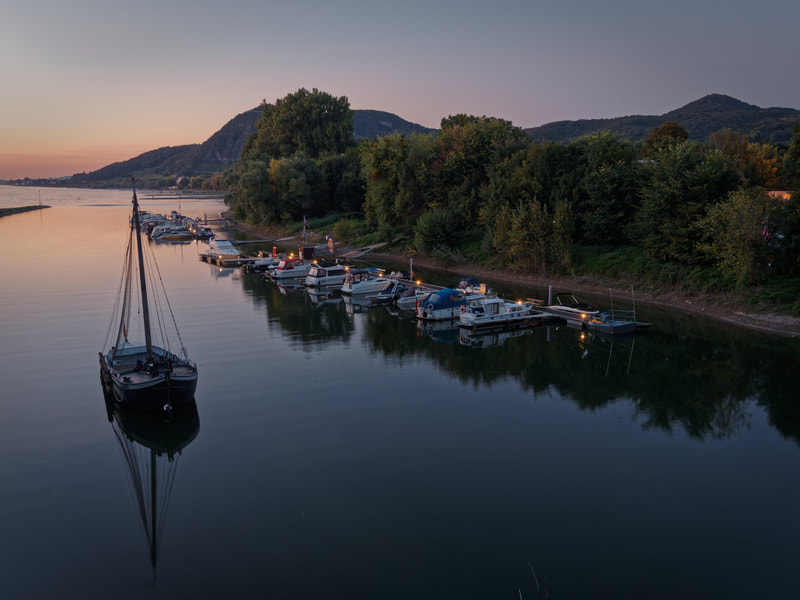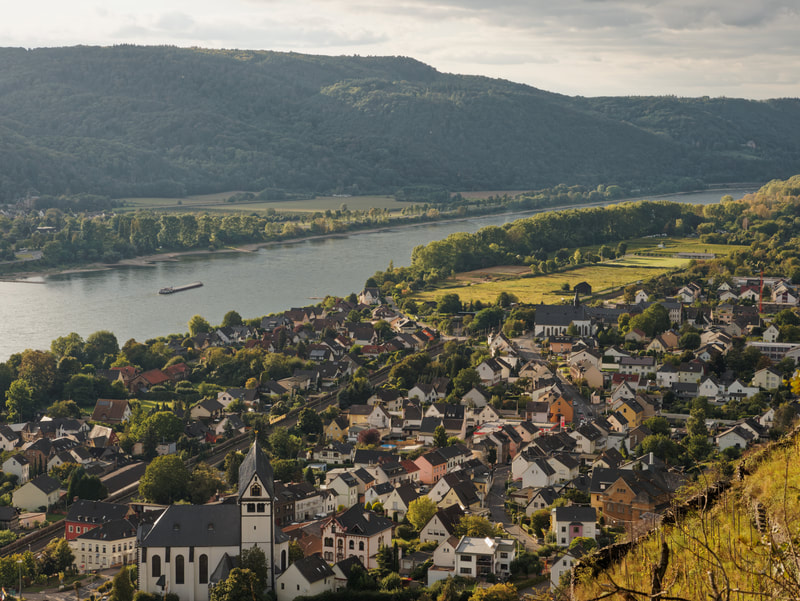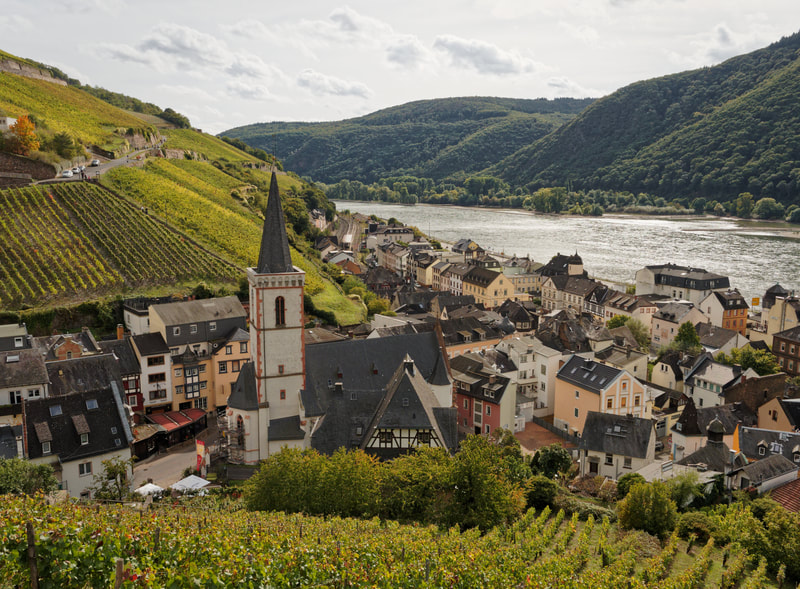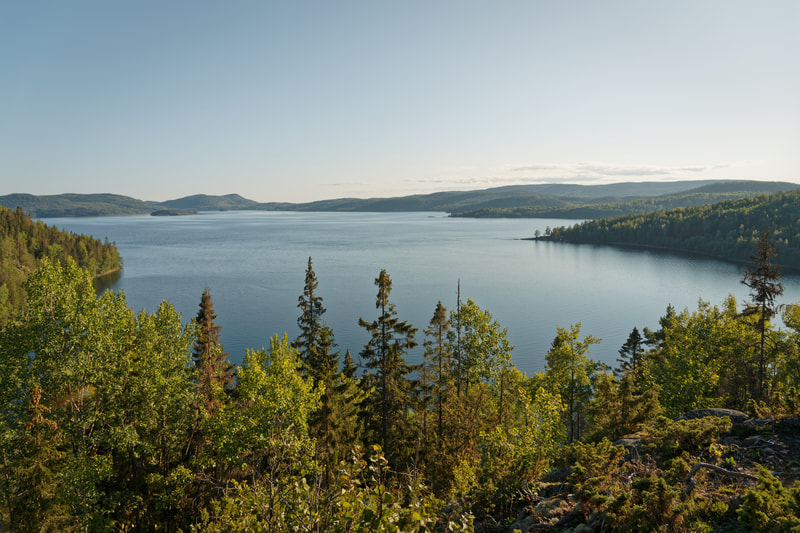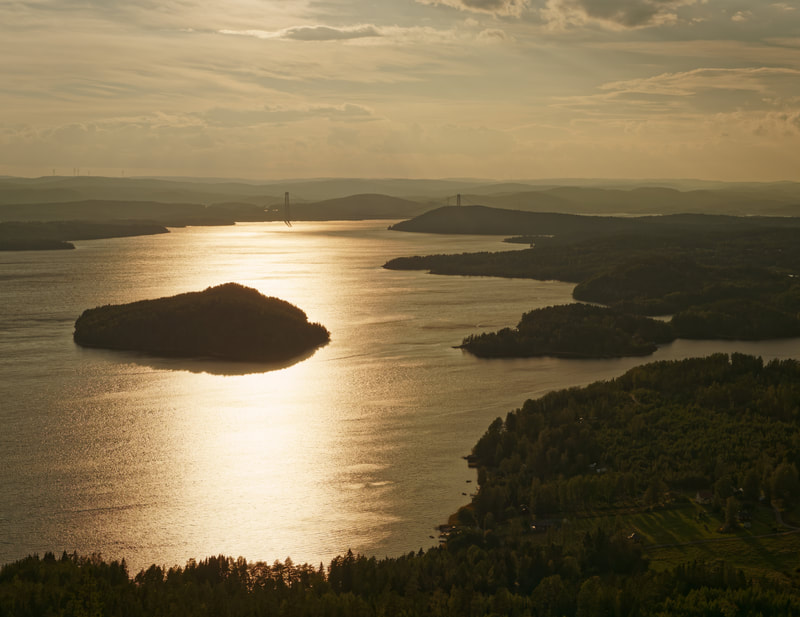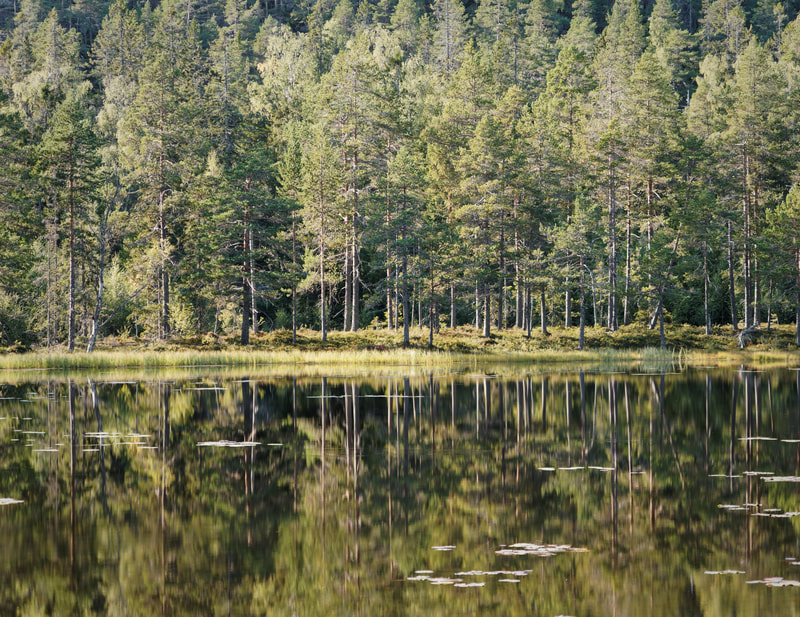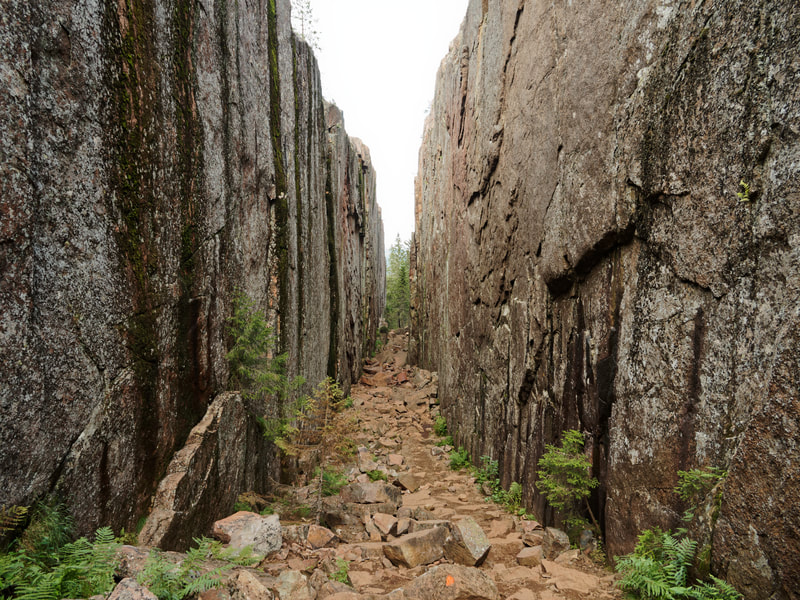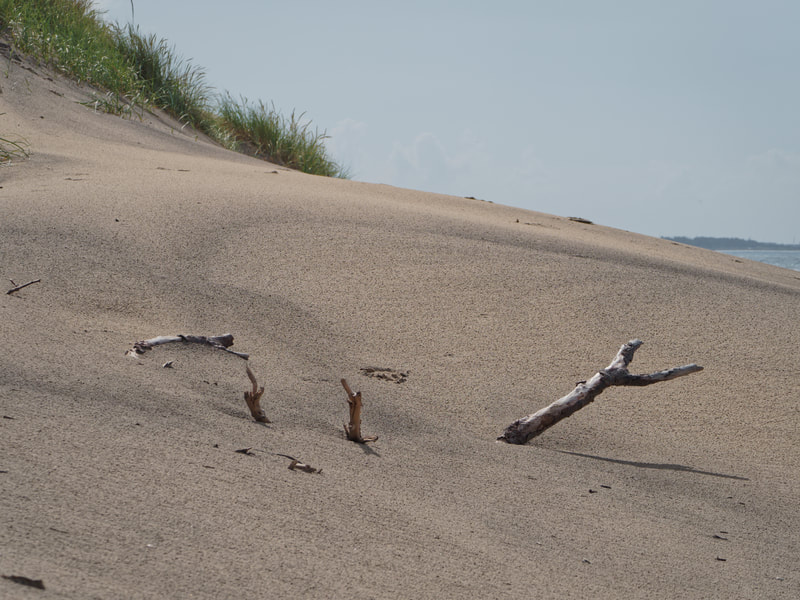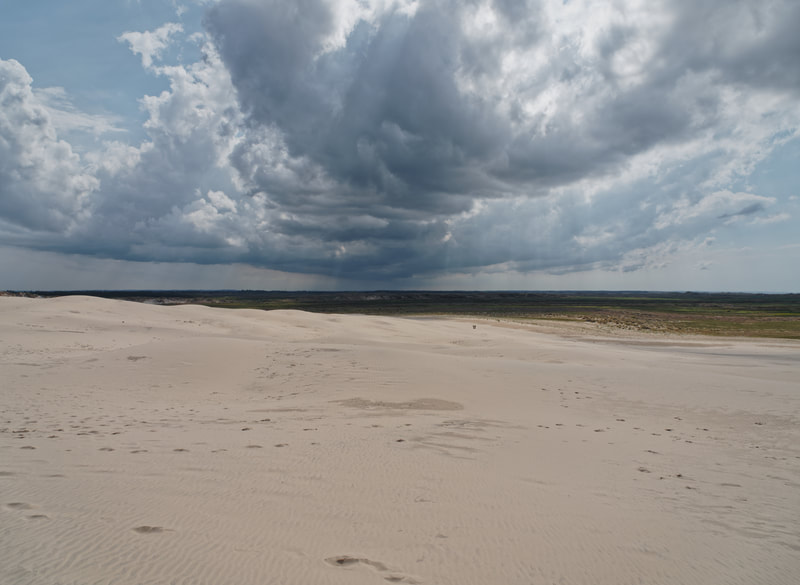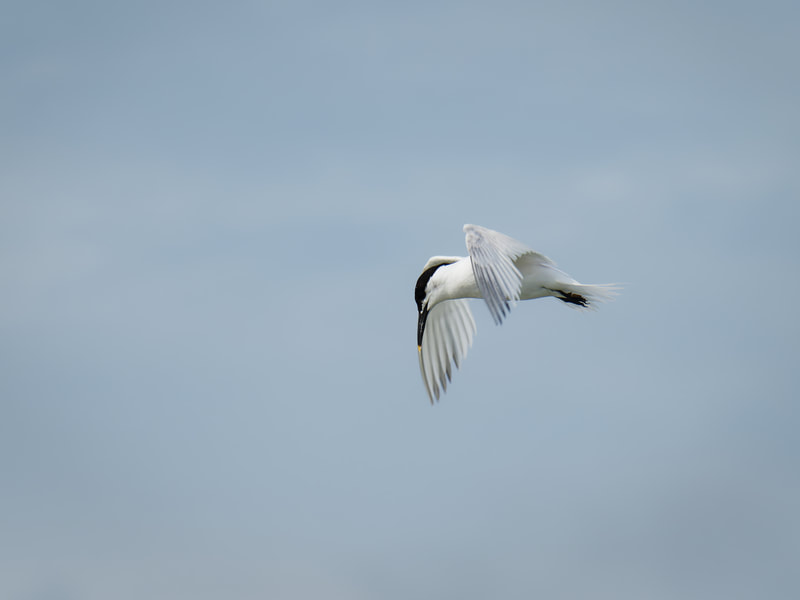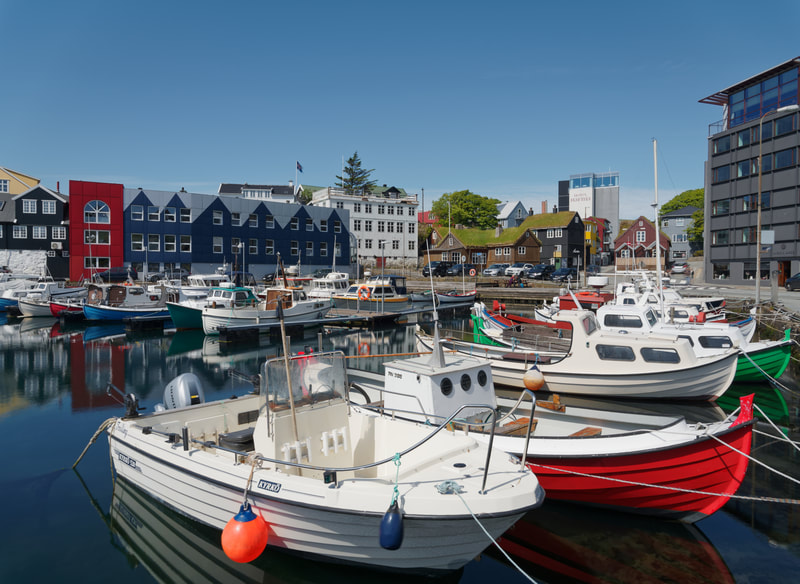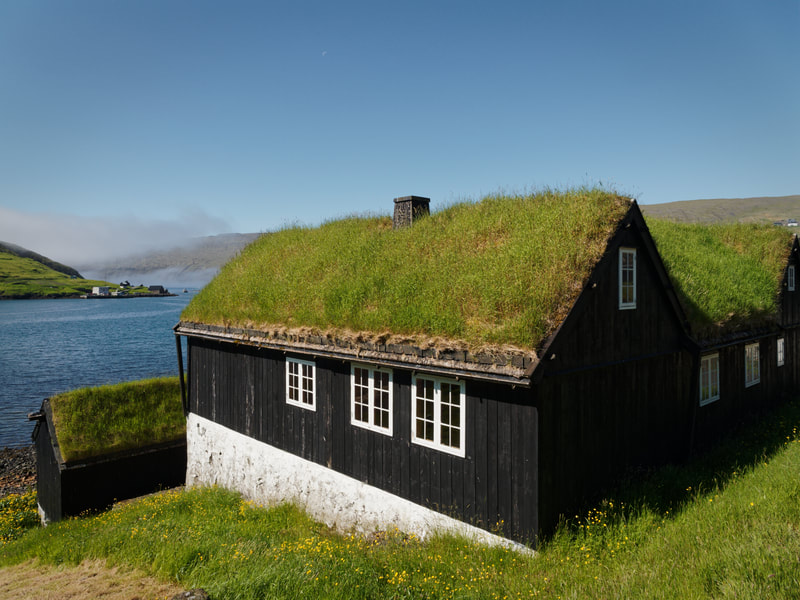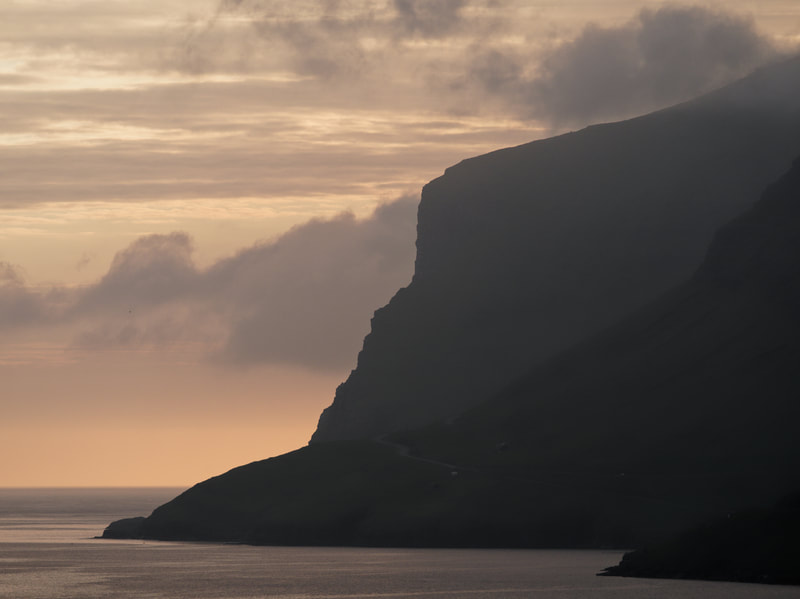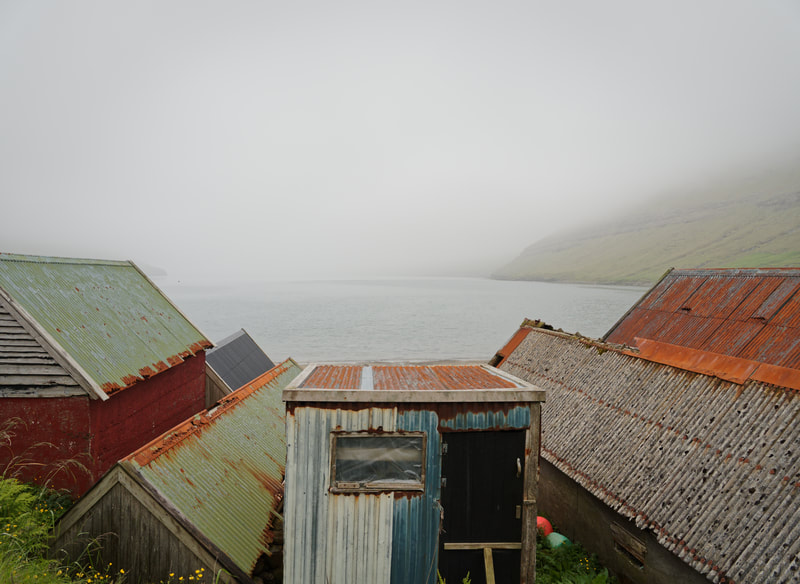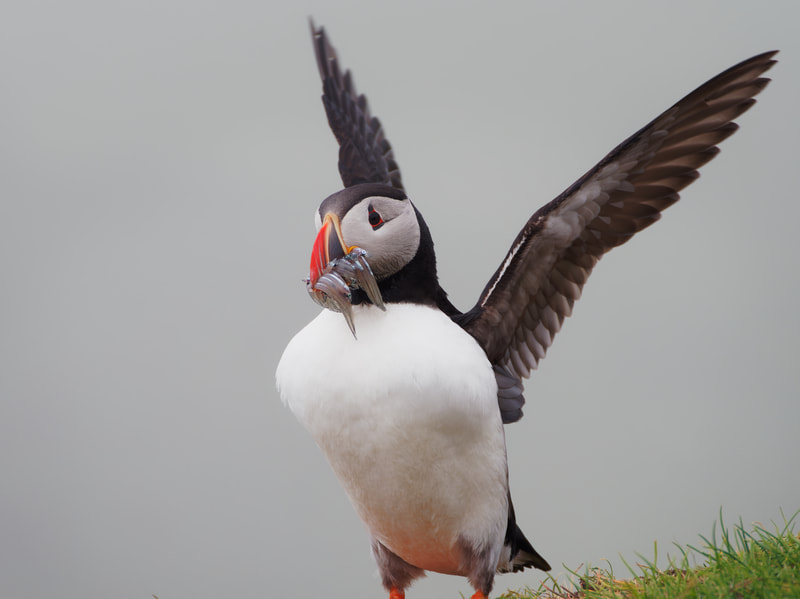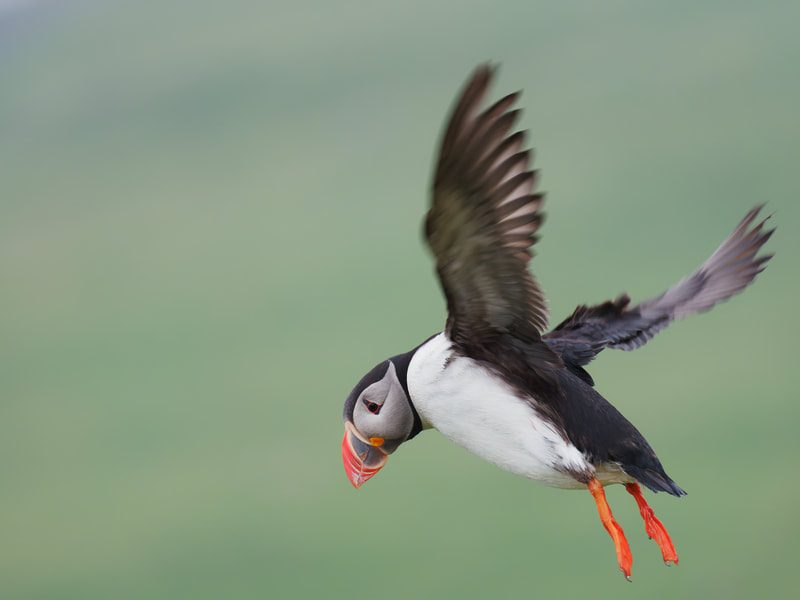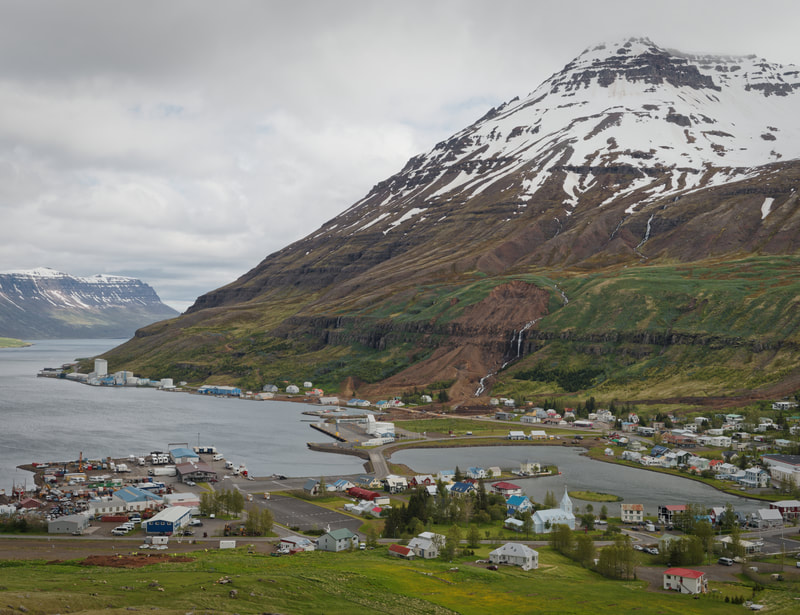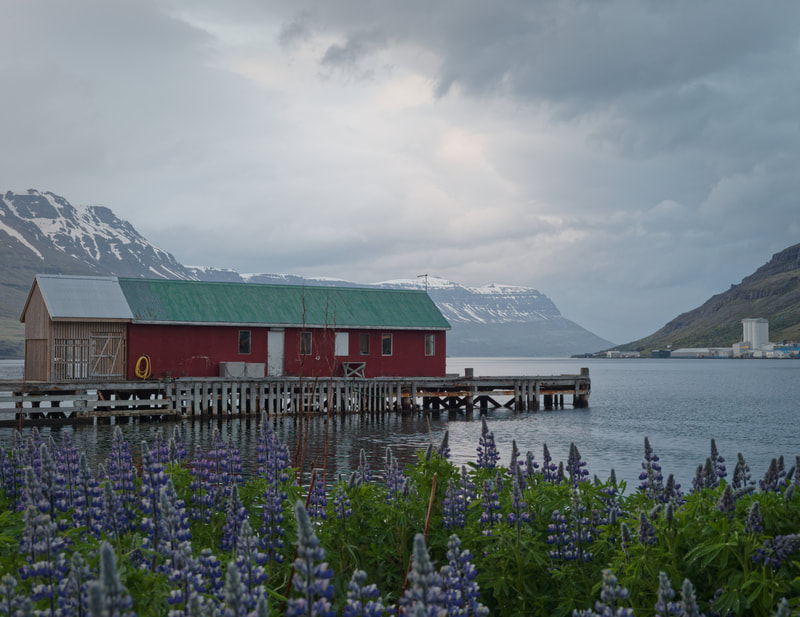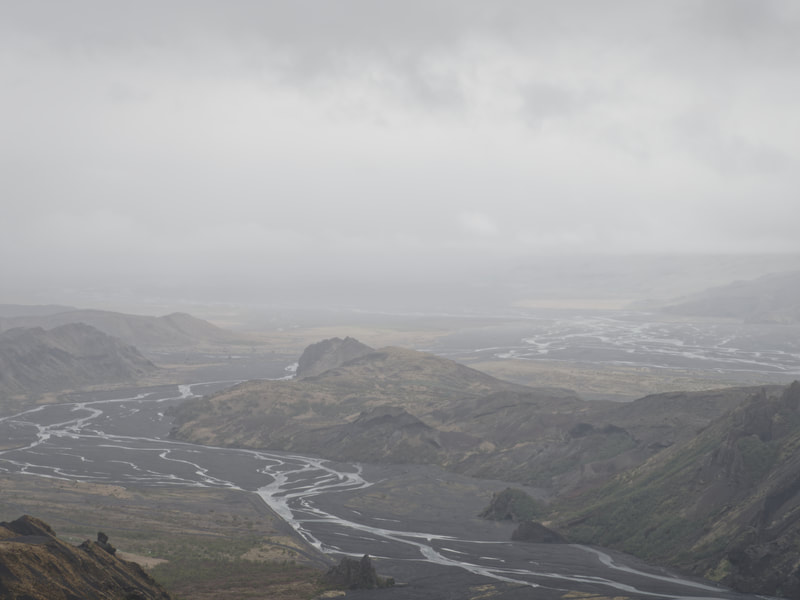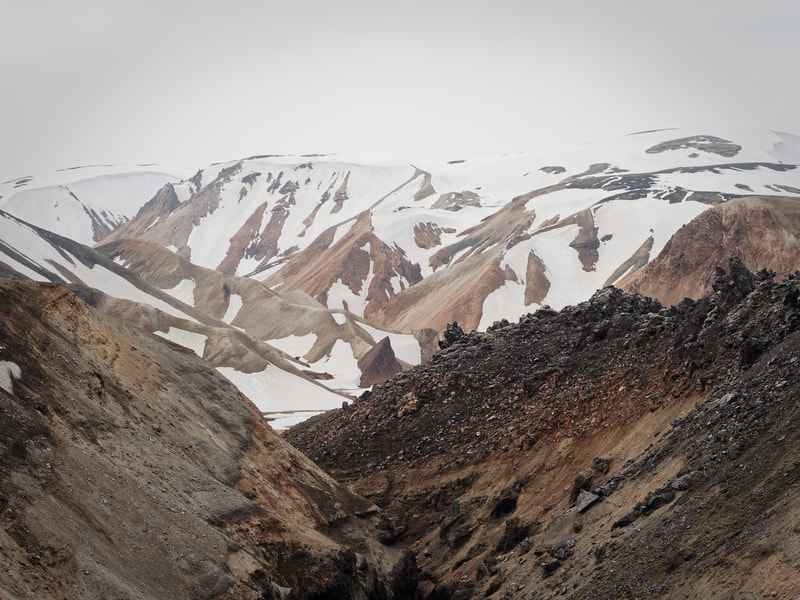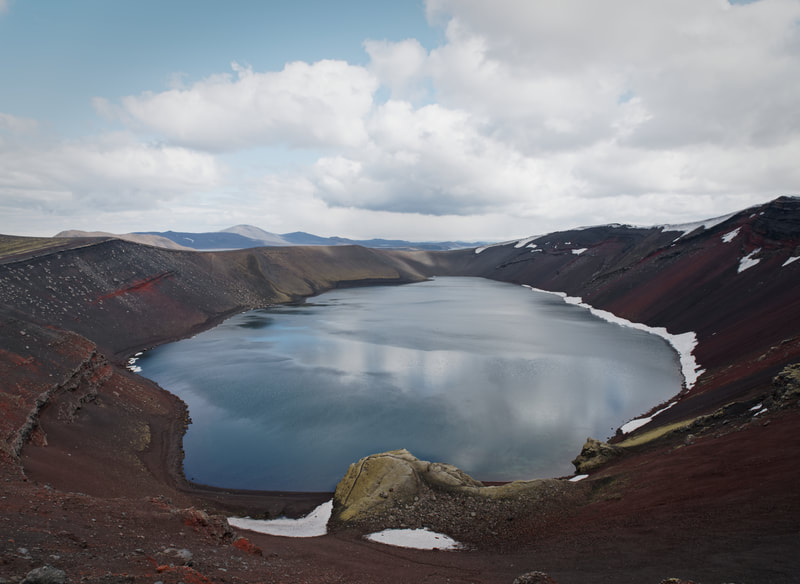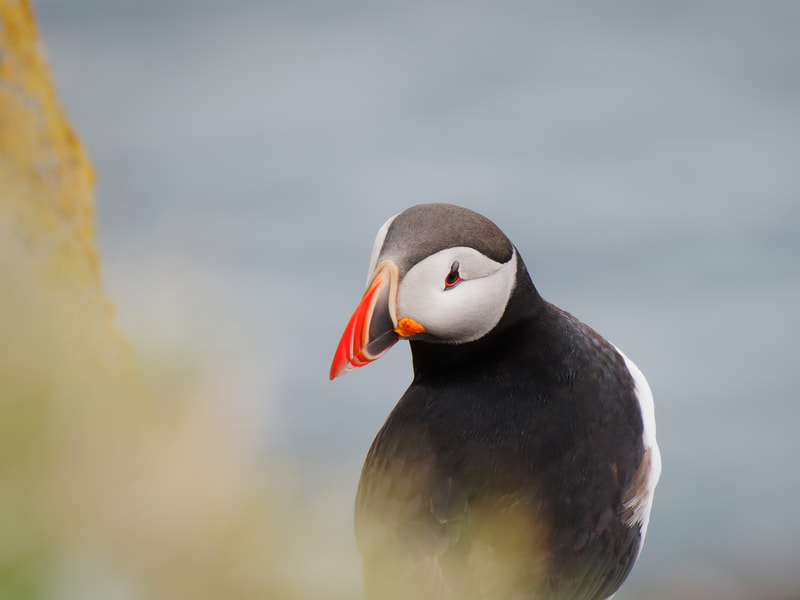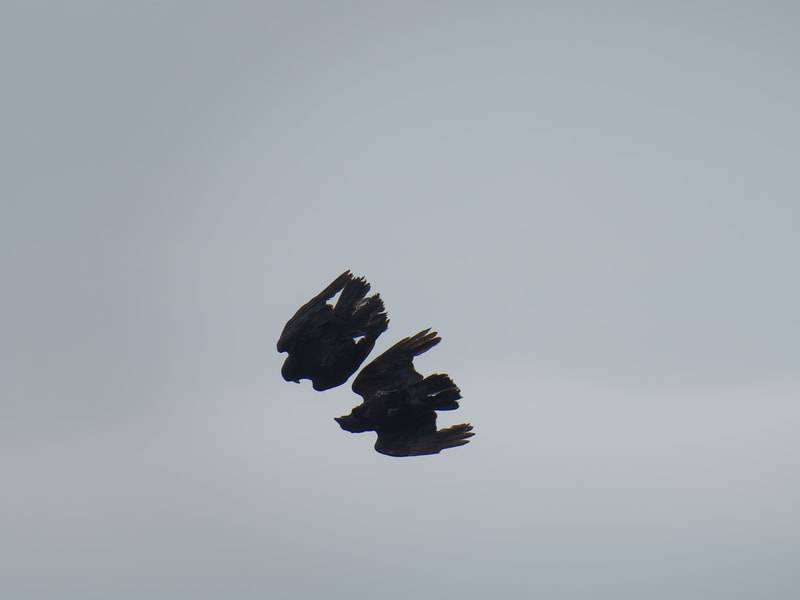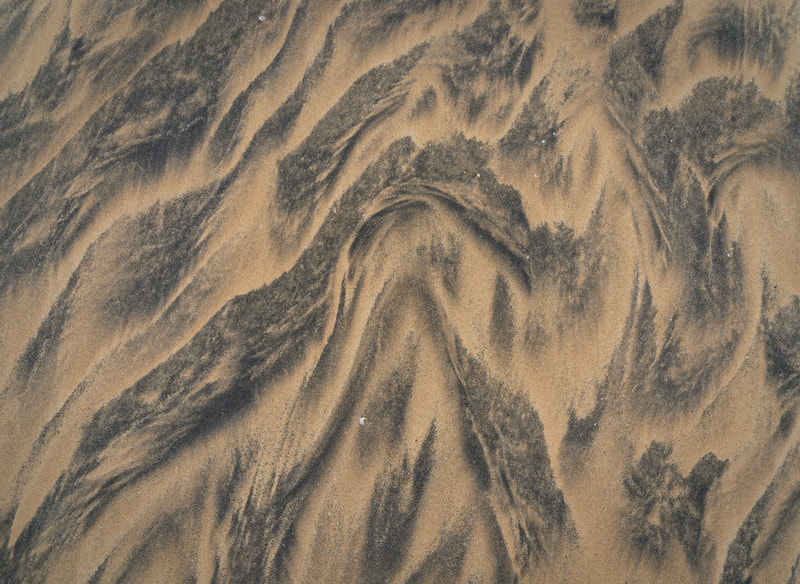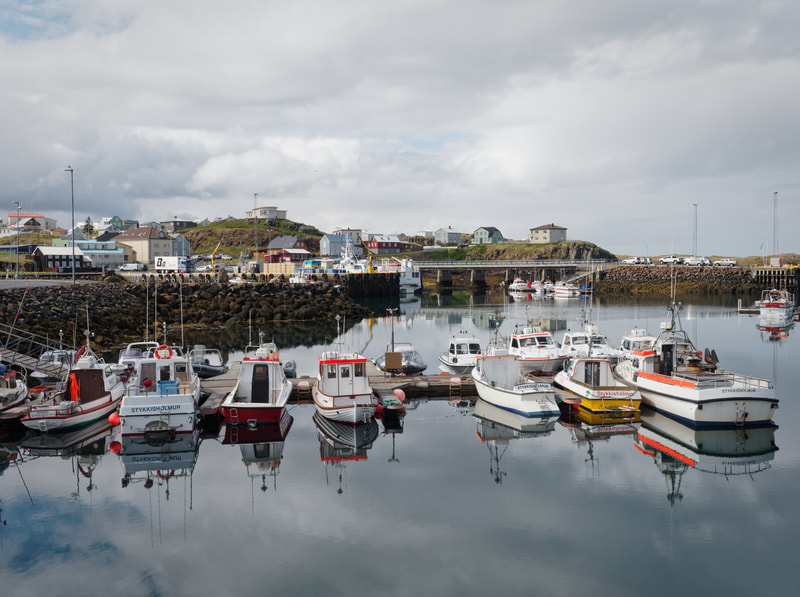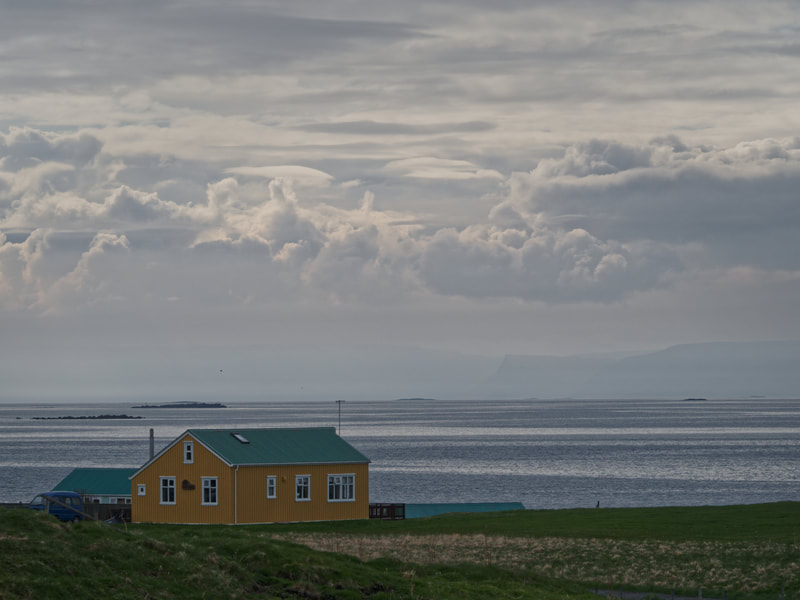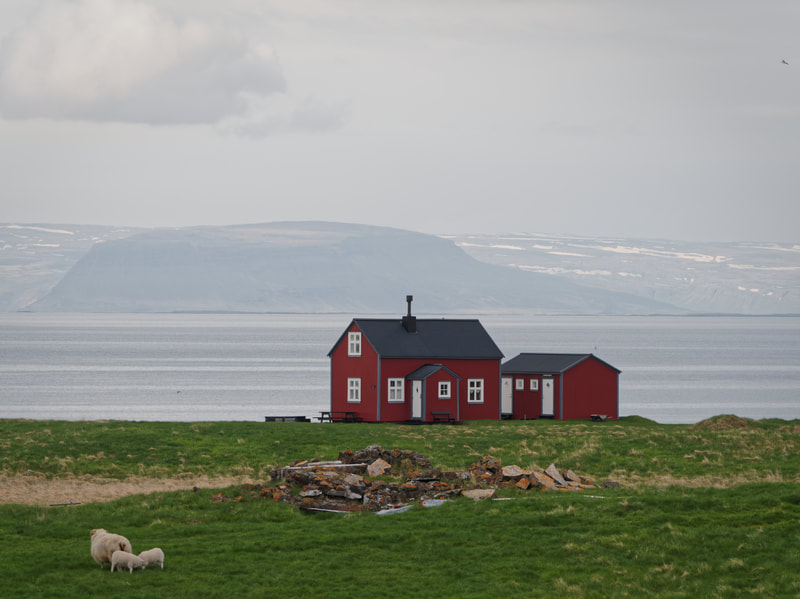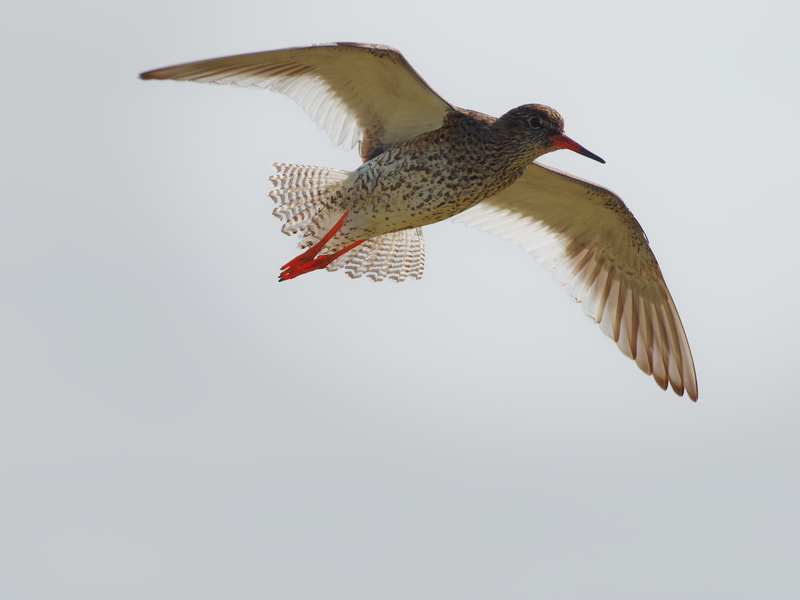|
Ystad was our latest destination in Sweden. We decided to end our hike on Skåneleden as the next sections of the SL4 did not look very attractive. We prefered to take the ferry from Ystad to Bornholm (DK) for a short visit of the island and then further to Sassnitz/Rügen (D). In Germany, we originally planned to hike a part of the Baltic sea hiking trail. But we were really surprised by the huge number of tourists in September after the summer holidays. So we had to change our plans again and decided to travel to Bonn to hike the famous RheinSteig instead.
The RheinSteig is a 320 km trail on the eastern side of the Rhine from Bonn over Koblenz to Wiesbaden. The trail follows mainly narrow paths with steep climbs and descents through forests and vineyards and offers many spectacular views. The RheinSteig is easily accessible by public transport and is completely marked with blue signs. We hiked from Bonn to Rüdesheim and can really recommend this trail. For more information please visit the homepage RheinSteig (rheinsteig.de).
0 Comments
After our hiking in the High Coast area, we decided to travel south to hike a very beautiful part of the Skåneleden: The Österlenleden from Brösarp to Ystad, southeast of Skåne. This was a really good decision because we met very beautiful late summer weather and we had the white sandy beaches almost to ourselves.
The trail follows mostly the coastline of the baltic sea and crosses picturesque villages like Kivik, Simrishamn and Kåseberga as well as the small Stenshuvud nationalpark. Our route ended in the beautiful town of Ystad, which is famous for the Wallander criminal novels from Henning Mankell. For more information you can visit the homepage of the SL4 Österlen (skaneleden.se). After our stay in Switzerland for the COVID-19 vaccination, we travelled to Sweden to hike the High Coast Trail. I didn't have the laptop with me because we travelled with ultra lightweight gear. That’s why I didn’t update this blog during our stay. But now, we are back in Switzerland again and I am able to write about our experiences.
The High Coast Trail The High Coast area is located at the coast of the Baltic Sea and is an UNESCO World Heritage site, featuring the highest coastline in the world at approximately 286 metres above sea level. Due to a geological process called post-glacial land uplift – occurring since the most recent ice age – the land continues to rise at a rate of approximately 8 millimetres per year. The 130 km long High Coast Trail goes through the entire world heritage site from Hornöberget in the south to Örnsköldsvik in the north and crosses the nationalpark Skuleskogen. The trail offers a unique mix of coastal landscape, forests with rich flora and fauna, rocky shorelines, astonishing viewpoints and long sandy beaches. For more informations about the area and the trail you can visit Hike The High Coast Trail through the world heritage site | Höga Kusten (hogakusten.com). To expand our trail, we added some sections of the Världarvsleden in the same region. In total, we hiked more than 200 km in this area. It was a very nice hike, not least due to the generally dry weather we met ;-). We can really recommend visiting the High Coast. After our arrival in Hirtshals (DK) by ferry, we hiked the Nordsøstien (North Sea Trail) from Hirtshals to Skagen. The Nordsøstien is a very beautiful and well-marked hiking trail that leads along beaches, through forests and wide dune landscapes. Skagen is our last destination on our first trip to the north. After Skagen, we will travel back to Switzerland for the COVID-19 vaccination. In August 2021, we plan to continue our journey in northern europe, so stay tuned for further blog updates in a bit more than a month. Hirtshals Hirtshals is a town with a seaport at the coast of Skagerrak close to the top of the Jutland peninsula in northern Denmark. Fishing plays a major role in the town, as does tourism and the renting of summer houses in the well-known holiday area. There is a beautiful lighthouse next to some old military infrastructure from the second world war. Skagen Skagen is the northernmost place in Denmark and renowned for its amazing light, unique nature and white sandy beaches. It is situated near Grenen, where the Baltic sea meets the North sea. Other very beautiful places to visit around Skagen are the “Råbjerg Mile”, North Jutland's Sahara desert, and the sand-covered church called “Den Tilsandede Kirke”. We enjoyed our last days in Skagen very much and will hopefully come back again one day in the future. The Faroe Islands lie on our trip back to the european mainland. We have visited these islands already in 2017, and we have never forgotten the incredible beauty of this archipelago. Now we are really happy to see them again. The 18 small islands are characterised by steep cliffs, tall mountains and narrow fjords. After visiting the Faroe Islands we are travelling to Hirtshals/DK by ferry and then we will hike from Hirtshals to Skagen on the Nordsøstien (NorthSeaTrail). Streymoy (Tórshavn, Kvivik, Vestmanna) Streymoy is the largest and most populated island of the Faroes Islands. Tórshavn is the capital and largest city and lies in the southern part of Streymoy. Kvivik and Vestmanna are two villages that lie in the northern part of the island. They are absolutely worth visiting and offer various possibilities for hiking. Eysturoy (Gjógv) Eysturoy is the second-largest island. We visited the small village Gjógv, which is in our opinion one of the most beautiful villages that we’ve seen so far. Gjógv is named after the 200 metre long sea-filled gorge which is used as a natural harbour. Vágar (Sørvágur, Miðvágur) On Vágar is the largest lake of the country - Sørvágsvatn or Leitisvatn. The lake lies only about 30 meters above the ocean. The steep and significant elevation changes of the surrounding hills give the lake a very unique look. Vágar is also home to the islands’ only airport. Norðoyar (Klaksvik, Trøllanes, Árnafjørður, Trøllanes, Viðareiði) The six islands in the northeast are together referred to as Norðoyar, i.e. the Northern Isles. The area offers stunning views and beautiful hikes, but because of the foggy weather, we had to adjust our hiking plans. One of the most famous places is the Kallur lighthouse on Kalsoy Island. Mykines Mykines is the westernmost of the 18 main islands. The only settlement with a population of about 10 inhabitants is called Mykines as well. The island is famous for its rich birdlife as it is a significant breeding site for seabirds. Seyðisfjörður in east Iceland is our last stop in Iceland. After that we will travel to the Faroe Islands by ferry and stay there for another 10 days. Seyðisfjörður The small town Seyðisfjörður is located between Mt. Bjólfur (1085m) and Strandartindur (1010m). The center of the town is beautifully located around the lagoon and is well known for its original early 19th-century timber houses. Bye bye Iceland After little more than three months in Iceland, it is time for us to say goodbye to this very beautiful country in the northern atlantic. It was an excellent idea and a unique opportunity to travel to Iceland during this time, because under normal circumstances, the island would have been much more crowded. During the last weeks we noticed the steadily growing tourism, so for us it is the right moment to leave the island. We will never forget being almost alone in such famous places like Skógafoss or the Geysir hot spring area. The highlands are our last longer stops in Iceland. We decided to visit two famous locations, which are accessible in mid-june by the highland bus: Þórsmörk and Landmannalaugar. Þórsmörk Þórsmörk is a nature reserve in the southern icelandic highlands, located between the glaciers Eyjafjallajökull, Mýrdalsjökull and Tindfjallajökull. The area is mainly a valley and a mountain range between the rivers Krossá, Þröngá, and Markarfljót. The spectacular landscapes with glaciers, woods and canyons make Þórsmörk a popular hiking destination. Landmannalaugar Landmannalaugar is a very unique area, both geologically and aesthetically. It is nested beside the black Laugahraun lava field, originally formed in an eruption in 1477. Landmannalaugar itself is made up of rhyolite mountains, a rock type that creates a large spectrum of glossy colours: shades of red, pink, green, blue, black, golden and yellow. Currently, it looks particularly beautiful as there are still many white snowfields in between. After crossing the Breiðafjörður by ferry, we reached the icelandic westfjords. They are one of the country's most spectacular region and very different from other parts that we have seen before. We decided to visit three locations in the southwestern part: Látrabjarg, Rauðasandur and the Dynjandi waterfall. Látrabjarg The Látrabjarg cliff is the westernmost point of Iceland and Europe. Furthermore, it is Europe’s largest bird cliff stretching 14 km and reaching a height of 441 m. The variety and sheer number of birds that can be seen in Látrabjarg are unique. At least one million of puffins nest here, often very close to the top of the cliff. Rauðasandur Rauðasandur is a long beach located near Látrabjarg. This beach is famous for its red and golden colors which are rather rare compared to the black sand beaches typical in Iceland. During summer, the beach looks somewhat tropical. Special shells are responsible for the red color, and since the Westfjords are no longer volcanically active, there is no constant source of ashy sands such as at the black sand beach near Vik at the south coast of Iceland. Dynjandi Dynjandi waterfall is located in the heart of the Westfjords. It is the biggest waterfall in this region, nearly 100 m high and 60 m wide at the bottom. Directly below Dynjandi are 6 other waterfalls which are also very beautiful. After some days in Reykjavik with very rainy weather and therefore not many opportunities for hiking or photographing, we traveled towards the westfjords. On our journey, we stopped in Stykkishólmur and on Flatey island in Breiðafjörður. Stykkishólmur Stykkishólmur is a small town in the northern part of the Snæfellsnes peninsula. It is a center of services and commerce for the area and has a naturally well sheltered harbour. Most of the people make their living from fishing and tourism. A ferry goes over a fjord called Breiðafjörður to the Westfjords and crosses the small island Flatey on its way. Flatey island Flatey is an island located in Breiðafjörður in the northwestern part of Iceland. It is about two kilometers long, one kilometer wide and very flat (hence its name, meaning "flat island" in Icelandic). In the whole area of Breiðafjörður are about 3000 islands. The region is spectacular and consists of shallow waters, small fjords and bays as well as intertidal areas. The island has a seasonal habitation because most of the houses are only inhabited during summer. Akureyri and Hrisey island are our last longer stops in northern Iceland. After these destinations, we travel back to Reykjavik and stay there for a few days and some daily tours. And very important: The icelandic spring has definitely begun! Akureyri Akureyri is the centre of trade and services in northern Iceland. With a population of about 19.000, it is the second largest urban area outside the capital area of Reykjavík. The town is situated in one of the longest fjords in the country and is surrounded by mountains reaching up to 1500 m. Akureyri is a popular tourist destination and a good location for hiking or whale watching. Hrisey island Hrisey is a small island, also known as Eyjafjörður's pearl of nature. It is renowned for its abundant birdlife. The island lies out in the middle of the fjord and can be reached by a ferry. There are a small fishing village and some hiking trails. |
AuthorsThis blog is written by Damian and Eveline Categories
All
|


